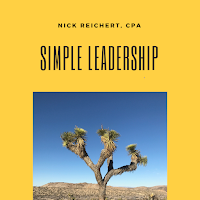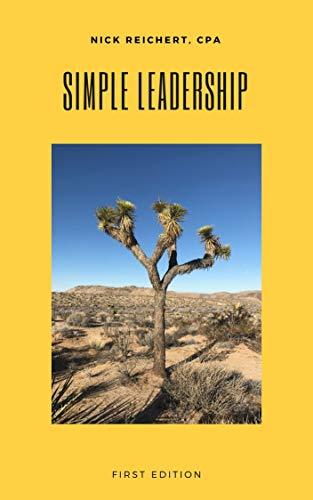Nick Reichert's Blog, page 20
June 29, 2019
Day Trading on Robin Hood - Part Three
 In last week's post, I talked about my first week investing in options on Robin Hood. It wasn't a great week and I basically broke even. One of my favorite trading quotes is "I didn't lose money, I just paid my tuition." Well, this week we had some more tuition to pay. Purchased $137 6/28 call options on the GLD exchange traded fund on Wednesday for $1,188, thinking that gold would continue to rally. Of course, that day the Fed in a couple of speeches dashed the market's hopes of a 50 basis point rate cut in July (25 basis point cut is now a 71.9% probability) and so gold sold off and those calls quickly became worthless.
In last week's post, I talked about my first week investing in options on Robin Hood. It wasn't a great week and I basically broke even. One of my favorite trading quotes is "I didn't lose money, I just paid my tuition." Well, this week we had some more tuition to pay. Purchased $137 6/28 call options on the GLD exchange traded fund on Wednesday for $1,188, thinking that gold would continue to rally. Of course, that day the Fed in a couple of speeches dashed the market's hopes of a 50 basis point rate cut in July (25 basis point cut is now a 71.9% probability) and so gold sold off and those calls quickly became worthless.However, the good trade of the week was entering into 12 Iron Condor contracts for $1,944 on Federal Express (FDX) on Monday. The Iron Condor was setup automatically by Robin Hood (short term, some risk) as follows:
Bought 12 FDX $160 Puts expiring 6/28Sold 12 FDX $162.5 Puts expiring 6/28Bought 12 FDX $172.5 Calls expiring 6/28Sold 12 FDX $170 Calls expiring 6/28
As a reminder, the Iron Condor trading strategy is non-directional, so you don't care which way the stock moves. Ideally, you just want the stock to basically stay in a narrow range set by the upper and lower "inside" put ($162.5) and call ($170) at expiration to make maximum profit. Stocks that show very little short term price movement, have very large market capitalization and high trading volume (with large option interest) are the best candidates for this structure. Not all stocks have Iron Condors available on Robin Hood, so you have to look around a bit. The advice I have read is to look for stocks that you would be happy to own in your retirement account. I was able to find Iron Condors on Robin Hood for Facebook, Apple, Amazon, Google, Disney, Nike, Intel, Netflix, Exxon Mobil, and Consolidated Edison, for example. They are also available on the QQQ and SPY exchange traded funds, which are great for short term Iron Condors in normal market environments because they typically have very low volatility in a given week. There is still the potential for some profit, even if the stock trades slightly outside these upper and lower "inside" limits. Your maximum losses are also limited, since if the stock drops or increases significantly beyond the "outside" put and call, the increase in value of the "bought" put/call will help offset the increase in value of the "sold" put/call.
I entered into this Iron Condor two days before FDX announced earnings on Wednesday of last week, which was a bit risky, since normally you would avoid earnings weeks for these since that increases volatility. The idea was to take advantage of the higher volatility leading into earnings to get a higher premium for the Iron Condor, capitalize on the significant drop in volatility post-earnings (since all the "news" is out) and hope that when it all settled down by Friday the stock would be back in the middle of the range established by the Iron Condor and the options would expire worthless. Needless to say, it was a wild ride and at one point looked like I was going to lose some money when FDX dipped down to $154 after hours post-earnings, but by the end of the week, the stock was back up to $164.50, all options expired worthless on Friday and I got to keep 100% of the premium. If successfully executed on a weekly basis, this strategy can be a nice source of positive cash flow. I also invested excess cash in Bitcoin during the week, which had its own wild ride and still managed to make a little money there as well.
I also bought a small Nike (NKE) Iron Condor on Wednesday before earnings release on Thursday for $201 that expires 7/5. Right now that one is profitable by $150 and looks like it should be fully profitable given where Nike has been trading both before and after the earnings announcement.
Overall, a profitable week and I'm planning to put another FDX Iron Condor in place for next week, now that earnings is out of the way and volatility should be way down, and while contract prices are still very solid for that stock. There is some potential for volatility with the US - China trade discussions over the weekend and FDX is potentially impacted depending on the outcome. We should know enough by the time the market opens on Monday to set something up that has a good chance of being profitable by end of week. Also looking at QQQ and SPY Iron Condors. Staying away from puts and calls, though!
Again, no fees on any of these trades with Robin Hood, which is very helpful to overall profitability.
Hopefully you found this insightful and it helps you Build Your Financial Fortress!
For more investing ideas, click here.
Disclaimer: I use affiliate links where I get paid a small amount if you buy the service or product. This helps support my blog.

Published on June 29, 2019 09:41
June 22, 2019
Day Trading on Robin Hood - Part 2
 As promised, this is a follow up to my prior post on the same subject. Here's what ended up happening when we started trading in my new Robin Hood account last week.
As promised, this is a follow up to my prior post on the same subject. Here's what ended up happening when we started trading in my new Robin Hood account last week.First of all, we saw too much volatility in the market. This is bad for Iron Condor option structures, which rely on very little volatility in order to be profitable. We were eyeing Coca Cola (KO), but the stock was moving too much as were the others that we had identified, so we put that idea on the side and looked at other opportunities.
There was so much volatility leading up to the announcement of the Fed's decision on interest rates, we turned our attention to straight-up option plays - puts and calls.
The first one that caught our attention was Facebook (FB). Fresh off of the announcement about their new stable coin crypto currency project Libra, the stock was looking good for upside, so we bought $192.50 FB Call options expiring in a week for $1,188 and closed the position the next day for $2,940, netting a nice profit of $1,752. Not bad for one day.
Still liking FB but worried about volatility and unsure which direction it would trade, we bought a FB Straddle / Strangle (call and a put, which although less profitable than buying one or the other, is a good play when you aren't sure which way a stock will move) at $2,940 and sold the next day for $3,160, netting a small profit of $220. Not great, but not bad either.
That's when things took a turn for the worse. We believed that one way or another, investors would certainly be disappointed with the Fed's rate decision since actual rate cuts were highly unlikely in June or July. Other than offering encouraging words, there was no rate cut in June and its now a much lower 32% probability in July (down from about 70% previously). Of course, more signs that the economy is beginning to slow appear every day, but that doesn't seem to bother the stock market either. We bought a $290.5 put on the SPY ETF at $2,184. Unfortunately, the market shot up after the Fed news and continued on into the after hours session and next trading day, at one point hitting a fresh 52 week high. The put quickly lost value and with only a couple of days left, was closed out at $264, a loss of $1,920, thereby negating both of the prior trade profits. A good, if not costly, learning experience about how dysfunctional our markets are.
Good news is I put the remaining funds ($2,500) into Bitcoin on Robin Hood and that has done nicely in the recent run-up (along with gold which also rallied after the Fed decision), increasing almost 20% at this point. I see Bitcoin as more of a buy and hold type of asset as I have written about in the past.
No fees on any of these trades with Robin Hood, which is very helpful.
Hopefully you found this insightful and it helps you Build Your Financial Fortress!
For more investing ideas, click here.
Disclaimer: I use affiliate links where I get paid a small amount if you buy the service or product. This helps support my blog.

Published on June 22, 2019 09:40
June 15, 2019
Day Trading on Robin Hood
 Well I finally downloaded the Robin Hood app. Here's a review and some ideas on what you can do with it. I decided to give it a try after my son has been touting it for the last few weeks and has been pretty successful trading penny stocks and more recently options. So while this is a review of the app, it's also a discussion of some of the investing strategies that are available in the app.
Well I finally downloaded the Robin Hood app. Here's a review and some ideas on what you can do with it. I decided to give it a try after my son has been touting it for the last few weeks and has been pretty successful trading penny stocks and more recently options. So while this is a review of the app, it's also a discussion of some of the investing strategies that are available in the app.Perhaps the best thing about the app is that all your trades are free, including options (which can be very expensive to trade on other platforms). I used to trade options on Sharebuilder (now Capital One) and it used to cost me a small fortune. For $5 per month you get the Gold account, which gives you larger instant deposits, access to Level II market data, margin loans and more investing tools and research. One of the other nice features is that you can trade crypto currencies on the app (again with no fees). The home screen is pretty simple and shows the value of your portfolio, a section of "cards" that have updates of interest to you, the stocks you own and then your watch list. If you sign up for an account, they give you a free random stock. I ended up with one share of Fitbit (FIT), but supposedly you have a chance to get something better like a share of Apple or equivalent. Searching for stocks is easy, as is trading. Also, linking your bank account is really easy and they support most of the major banks with just your online login and password.
What I was pretty impressed with was the support they provide for options trading, including simple explanations of how the contracts work and the duration / risk you are signing up for. Options trading is a great way to use leverage to increase your investing returns, since you control a large amount of shares for a relatively small option premium. What's perhaps most impressive is that the app supports more complex strategies including Straddle / Strangle and the Iron Condor, with very simple explanations.
The Iron Condor is particularly intriguing for stocks that have a low volatility. You essentially sell two puts and two calls that are set at different prices, forming a range and collect the premium up front. As long as the stock trades within the range of the calls and puts until expiration, you make the maximum profit (which is the premium). If the stock deviates higher or lower than the middle put and call range, you lose some money and if it goes beyond the second level in either direction, you take the maximum loss (which should be about 50%, since the premium you collected plus the value of the other "out of the money" option will offset the loss on the "in the money" option). Your maximum profit would also be about 50%. Repeating this in a regular cycle and reinvesting proceeds from each successful trade can build up your funds relatively quickly. While straight option strategies can have a much higher profit multiple, this strategy limits your upside and downside risk while yielding an attractive return. It's also non-directional, so you don't have to "bet" on a stock moving up or down, which I like.
The real trick for this strategy to work is picking a low volatility stock that trades within a tight range for extended periods of time. Right now, we like INTC and NFLX for this strategy since these look to have very little price movement recently. Best to avoid this around the time that companies have big announcements, like earnings season. Trying this out next week with a small investment and will report back on how well this strategy works.
Hopefully you found this as intriguing as I did and it helps you Build Your Financial Fortress!
For more investing ideas, click here.
Disclaimer: I use affiliate links where I get paid a small amount if you buy the service or product. This helps support my blog.

Published on June 15, 2019 09:37
June 8, 2019
I Want to Invest, But How Do I Get Started?
 One of my loyal readers posed a question to me the other day that I thought would be a great subject to cover in a post. Here it goes:
One of my loyal readers posed a question to me the other day that I thought would be a great subject to cover in a post. Here it goes:"You have a lot of great investing ideas that I would love to try, but where do I find the money? With a family and all the related household expenses that go along with that, it's difficult to find extra money to invest."
Here are 10 ideas for getting extra cash to invest:
Get Rid of Credit Cards - First, pay off those credit cards - that's a guaranteed return of whatever interest you are paying on the balance (I just checked and the lowest I saw was between 15% and 26% with excellent credit)! Once the cards are paid off, use the credit card payment money to accelerate your regular savings (see 3 below).Contribute to Retirement - Next, make sure you are contributing as much as you can to your 401(k) at work and your IRA outside of work - that is money you automatically save / invest and you'll never miss it; if you can't contribute the maximum, at least contribute an amount equal to what your employer matches; then you can work on saving extra money for non-retirement investmentsHide It - Out of sight out of mind - try saving a small amount every month, like $100 or $200 automatically into a savings account and ignore it; once that account grows to $1,000 or $2,000 you can use that for an investment - maybe to purchase some dividend-yielding stocks that can provide positive cash flow to further boost your savings (see this post for some ideas); I currently invest $100 / month in Bitcoin and while a bit more risky, over time that has grown nicely (see my recent post on crypto currency rankings here)Second Mortgage - When my Dad had an opportunity to buy the building he was leasing for his business from the owner, he didn't have the cash for the down payment even though his business would support a new loan payment; he really wanted to buy the building to lock-in his occupancy cost and enjoy the long-term appreciation; he was able to take out a second mortgage on his home to come up with the down payment to purchase the building - fortunately, the resulting home mortgage payment was still manageable within his budget and since his home had appreciated significantly from when he bought it, this enabled the second mortgage; this was a very creative approach and has turned out to be a great idea since both properties have continued to appreciate and should provide retirement funds in the future (either from rental income or outright sale); sometimes a second mortgage can be a great way to get a large amount of investing funds, as long as the higher mortgage payment is not an issuePersonal Loan - If you have a great investing idea, you want to execute it right away and need up to $35K, the best option is to take out a personal loan; my favorite is Prosper and I have used them a couple of times to borrow money for investing; you need to be careful, though, because if the investment doesn't pan out you will still have to pay back the loan - One idea I like is buying music royalties (see my post on this subject here) with that money, since they usually pay out for a 10 year period or longer and the loan is typically three years (the loan interest rate is usually way less than the yield on the royalty asset, especially if you have good credit), so in the early years the investment cash flow helps pay the loan off (with a little bit of a mismatch in timing since the royalties typically pay quarterly and the loan payments are setup monthly); after the loan is paid off, the cash flow is totally free and clear for the remainder of the term - doing this repeatedly can build a sizable quarterly cash flow stream over timeFriends and Family - Maybe you have some friends or family that want to invest along with you; if you pool your money you can make a larger purchase like possibly a rental property; there are some challenges with multiple owners of real estate that can be solved if you form an LLC to take the investment money and then use the cash to buy a property that the LLC owns. That way when an investor wants to cash out, you don't necessarily have to sell the property, you can just find a new investor or have the other investors increase their ownership to buy out the departing investor - all of this is pretty complicated and raising money for these deals can be a challenge, so make sure you have a good plan and work with a good attorney / CPA if you decide to go down this roadCrowdfunding - If you have a great business or investing idea, there are plenty of crowdfunding sites now where you can go to raise money to execute your plan; the downside of this is that you will have to share ownership and possibly control of your venture but "other people's money" is a powerful tool to launch an investment or new business idea; crowdfunding spreads the risk around so that no one takes on too much and yet you can still assemble a sizable amount of capitalSide Hustle - Start a side hustle to earn extra cash and take that money (after setting aside for taxes) and put to work in an investment; there are plenty of ideas for side hustles, including driving for Uber/Lyft, selling items on EBay (see my post on this), starting a blog, writing a book, start an online streaming or YouTube channel, sign up to do "gigs" on Fiverr, etc. The possibilities are endless and the only limit is your time, so you should experiment and gravitate towards the side hustles that give you the best return for your time.Day Trading - You may be able to start with a small amount of money like $1,000 and day trade penny stocks for a while to build up your account balance. This will require you to develop a "system" that includes researching trends in individual stocks, understanding how to read charts and look for "signals" that a stock is going to increase / decrease, making strategic buys, setting "stop loss" orders to minimize losses and selling when target appreciation rates are achieved. Since there is a large amount of volatility in penny stocks, there is tremendous risk but also tremendous opportunity for large short term gains. It's hard work, but once your account reaches $10K to $20K you can move that into "safer" investments that either provide cash flow, appreciation or both. Don't forget to set aside money to pay taxes!Put Your Money to Work - If you have money already and it's sitting in a bank savings account earning less than half a percent, go back up the the top of this list and look for better ways to deploy that money and put it to work . At least look at better interest rates to earn on that money (see my post on that here).
I hope these ideas help you understand that "where there's a will there's a way" and if you really want to get started investing, there are plenty of creative ways to get the money you need to start.
For more investing ideas, click here.
Disclaimer: I use affiliate links where I get paid a small amount if you buy the service or product. This helps support my blog.

Published on June 08, 2019 11:43
June 1, 2019
Progressive Real Estate Investing
 Many people are growing weary of the stock market and are looking to shift their investments into something a little more stable with good long term growth potential. Real Estate is one category that has been garnering more attention lately.
Many people are growing weary of the stock market and are looking to shift their investments into something a little more stable with good long term growth potential. Real Estate is one category that has been garnering more attention lately. This post is about how you can progressively invest in real estate for long term income and capital appreciation.
Step 1 - Own a home
You may already be a real estate investor if you own your own home If that's the case, good job you are on the right track If not, that's okay too, because there are plenty of other ways to invest in real estate
Step 2 - Invest in Real Estate Investment Trusts (REITs)
Focused on particular areas of the real estate market like residential (apartments, single family home rental, student housing, manufactured housing), office buildings, retail centers, self-storage, hospitality, medical buildings, etc.It makes sense to allocate your investment across several sectors for diversificationResidential is a popular sector because it tends to weather the business cycles well (people will always need a place to live); see link to a post I previously wrote on advantages of residential real estate investmentsPublicly traded and are very easy to buy and sell; highly liquid, unlike direct investments in real estateTypically distribute most of their earnings out annuallyThey usually have a high dividend yield, but these dividends may not be as tax beneficial as "qualified dividends" from a non-REIT, so need to bear that in mind when investing and check with your tax adviserStep 3 - Buy a small residential investment property
Buy a small investment property, maybe a house or a 1 or 2 bedroom condo near where you live (depending on how expensive your housing market is)When possible, I like to invest close to where I live to be able to keep an eye on the property, but if you live in a high cost of living area that may be difficult - there are options to invest long distance which I have written about (see link)There are few other investments where you can get a bank to loan you 80% of the cost of an asset and you only have to put 20% down, with a fixed interest rate for 30 yearsAdditionally, over time as the rent rises, the fixed loan payment will become less and less of the total income and the cash flow will continue to growYou can refinance the property in a few years and either lower the payment to get more cash flow (since the new loan will carry a new 30 year amortization) or you may even be able to take cash out of the property and keep the payment the same, which allows you to invest the proceeds in a new property and grow your portfolioFinally, the tax benefits of owning a property can be terrific - losses up to $25,000 (mostly caused by non-cash depreciation deductions) can offset your ordinary income and reduce your taxes, depending on whether you "actively participate," how much you make and whether you are a "Real Estate Professional." Always discuss with your tax adviser since these rules can be complex.If you're interested, I wrote a book on getting started in investing in real estate by buying small condos; it's short, concise and to the point.Step 4 - Sell small residential investment property and trade-up to a residential duplex or four-plex
Once your initial investment has appreciated sufficiently, you may be able to sell it using a 1031 exchange and buy a larger propertyA 1031 exchange allows you to take all of the proceeds of the sale (tax free) and roll into the purchase of another property, thereby deferring payment of taxes until you later sell the replacement propertyMost savvy real estate agents who are used to dealing with real estate investors know about this and can help you find companies that will facilitate the exchange and make sure you meet all the rules, which can be complex; it's also good to talk to your tax adviser about it firstFor the next property you buy, a four plex is a great option because you will have multiple units, which lowers your risk if a unit is vacant for a period of time and not earning rentAlso, four unit properties or less still qualify for 30 year fixed financing, which is a key advantage; larger properties require "commercial loans" which have higher interest rates, shorter repayment terms and can be more difficult to obtainSome investors may choose to live in one of the units and rent out the other three, or you can just hire a property manager to manage the buildingI prefer using a property manager so I can focus more on investing and less on fixing toilets Step 5 - Branching outOnce you have a good portfolio of residential properties that are operating smoothly, appreciating and generating positive cash flow, you may want to look at taking some of that positive cash flow and directly investing in other sectorsCommercial property investment used to be the domain of large institutional investors, but now there are some crowdfunding options that allow small, accredited investors to invest in commercial projects (see link for a post I previously wrote on this topic); these can include office buildings, large apartment buildings, retail projects, etc.If you have enough capital to buy one, a self storage facility is a really intriguing business; many people, especially in affluent areas, have too much "stuff" to put in their house or garage and need a place to store it; self storage requires very little in the way of manpower to operate and management can even be outsourced if desired; the model relies on people dropping off their stuff and paying the monthly rent for many years; if people don't pay their rent, the contents are auctioned off to pay the rent and penalties (maybe you have seen the show Storage Wars); definitely worth looking intoI hope this post helps you organize your own plan for progressive real estate investing.
For more investing ideas, click here.
Disclaimer: I use affiliate links where I get paid a small amount if you buy the service or product. This helps support my blog.

Published on June 01, 2019 11:33
May 31, 2019
Simple Leadership - FREE on Kindle 6/1 and 6/2!

Simple Leadership now available for FREE download on Kindle - 6/1 and 6/2 only. Please download, read and leave a review!
If you are passionate about leadership, curious about learning new leadership skills and want something practical that you can quickly apply in your daily activities, Simple Leadership will be a great addition to your leadership library!
Simple Leadership, is available in Kindle and Paperback formats. Audible version will be available soon.
This book covers my leadership experience spanning the past 30 years and what I have learned to build and grow high-performing teams. As a busy executive myself, I understand and appreciate getting to the point quickly. This book was written to be a simple and concise guide intended for quick reading, with actionable content.
Are you ready to take your leadership to the next level?

Published on May 31, 2019 23:39
May 25, 2019
Top 20 Crypto Rankings
 This is an update of a post I originally wrote back in December 2018, when I listed the top 20 crypto currencies and researched some publicly-available ranking websites. The purpose of the original Crypto Rankings was to help investors sort through the many crypto currencies and find the best ones to invest in. If you are new to investing in crypto currencies, or are a seasoned investor, you know there are a lot of coins to choose from and it can be confusing to decide on which ones are suitable for investment. This is especially true as more coins are issued every day and the coins that are already in use fluctuate wildly on a day to day basis.
This is an update of a post I originally wrote back in December 2018, when I listed the top 20 crypto currencies and researched some publicly-available ranking websites. The purpose of the original Crypto Rankings was to help investors sort through the many crypto currencies and find the best ones to invest in. If you are new to investing in crypto currencies, or are a seasoned investor, you know there are a lot of coins to choose from and it can be confusing to decide on which ones are suitable for investment. This is especially true as more coins are issued every day and the coins that are already in use fluctuate wildly on a day to day basis. It's precisely this volatility that creates the incredible, perhaps generational, opportunity for very strong investment returns for an astute investor. Crypto currency adoption continues at a rapid pace. More and more people are beginning to appreciate crypto currency's ability to function as currency, investment and store of value (similar to precious metals without the illiquidity). Of course, managing your risk is essential and I talk about that extensively in some of my other posts. If you are interested in learning more about investing in Cryptocurrency, check out Investing In Crypto, Developing a Crypto Invesment Strategy and also Crypto Strategy Update for more information.
To develop the Crypto Rankings, I start with a simple list by market cap of the top 20 crypto currencies. Then I add the ratings. There are three main ratings I use: Coin Checkup (this time I enhanced the ranking matrix by converting the 1-5 number grade to a simple letter grade to better compare with the others), Rency (assigned a letter grade) and Weiss (assigned a letter grade). I add the letter grades and highlight the ones that look the best based on consistent "B" or higher ratings across the board. It's interesting to note that two new coins entered the top 20 since my last post: Tezos and Cosmos. Also, two coins dropped off the list: ZCash and Dogecoin. While there were some changes in the prior relative rankings, the rest of the list stayed pretty much the same over the past five months.

As you can see above, the strongest coins currently are Bitcoin, Ethereum, Ripple (XRP), Stellar and Cardano based on market cap and overall ratings. All of these coins fall into the "Top 10" market cap ranking as well. I hope this update helps you evaluate your options in the crypto space. Please leave a comment and share your thoughts.
For more investing ideas, click here.
Disclaimer: I use affiliate links where I get paid a small amount if you buy the service or product. This helps support my blog.

Published on May 25, 2019 12:51
May 19, 2019
Simple Leadership - Now On Sale!
I'm happy to announce that my new book, Simple Leadership, is now on sale and available on Kindle. Paperback and Audible versions will be available soon.
This book covers my leadership experience spanning the past 30 years and what I have learned to build and grow high-performing teams. As a busy executive myself, I understand and appreciate getting to the point quickly. This book was written to be a simple and concise guide intended for quick reading, with actionable content. Leadership is a journey and a series of experiments to learn what works and what doesn't for you as a leader and the people and teams that you lead. If you are passionate about leadership, curious about learning new leadership skills and want something practical that you can quickly apply in your daily activities, Simple Leadership will be a great addition to your leadership library.


Published on May 19, 2019 23:14
May 18, 2019
Bear Market Investing
 So you might think the stock market is going down just like Dennis Gartman, who made the call to short the market yesterday. There are plenty of ways to invest and make money in a declining stock market. One relatively simple and easy method is to invest in inverse leveraged ETF's.
So you might think the stock market is going down just like Dennis Gartman, who made the call to short the market yesterday. There are plenty of ways to invest and make money in a declining stock market. One relatively simple and easy method is to invest in inverse leveraged ETF's. These funds use derivatives to mirror the opposite performance of the underlying stock index and many employ leverage to amplify those returns. So for example, if the Nasdaq index drops 1%, an inverse unleveraged ETF that tracks that index will go up 1%, but an inverse ETF with 3x leverage will go up 3%. I pulled a screen of the 10 worst performers year to date, thanks to the ongoing bull market. These ETF's may be due for a turn-around, if indeed the bear is coming.
SymbolETF NameYTD1 year3 year5 yearSOXSDirexion Daily Semiconductor Bear 3x Shares-52.81%-40.18%-96.64%-98.86%LABDDirexion Daily S&P Biotech Bear 3x Shares-46.17%-16.77%-94.74%N/ASQQQProShares UltraPro Short QQQ-42.75%-36.87%-87.47%-95.45%FAZDirexion Daily Financial Bear 3X Shares-38.00%-19.38%-78.32%-89.67%SRTYProShares UltraPro Short Russell2000-35.84%-0.14%-76.55%-86.09%TZADirexion Daily Small Cap Bear 3X Shares-35.51%1.45%-76.22%-86.34%SPXSDirexion Daily S&P 500 Bear 3X Shares-34.11%-23.17%-72.83%-86.32%SPXUProShares UltraPro Short S&P 500-34.10%-22.84%-72.20%-85.60%QIDProShares UltraShort QQQ-30.05%-22.87%-72.55%-85.30%SDOWProShares UltraPro Short Dow30-27.96%-21.98%-77.45%-87.61%
One of the most popular ETF's is ProShares UltraPro Short QQQ (SQQQ), which is ranked third on the list with a -42.75% YTD return. This fund has by far the highest average trading volume of the group at about 30.6 million shares and the second highest total assets at about $945M. This ETF offers 3x daily short leverage to the NASDAQ-100 Index, making it a powerful tool for investors with a bearish short-term outlook for technology equities.
Another interesting ETF is the Direxion Daily Semiconductor Bear 3x Shares (SOXS) with a -52.81% YTD return. This fund has average trading volume of 8 million shares and total assets of $203M. This ETF offers 3x daily short leverage to the PHLX Semiconductor Index, making it a powerful tool for investors with a bearish short-term outlook for semiconductor equities.
SQQQ and SOXS leverage resets on a daily basis, which results in compounding of returns when held for multiple periods. These can be powerful tools for sophisticated investors, but should be avoided by those with a low risk tolerance or a buy-and-hold strategy, of course.
There are other ETF's for shorting Biotech, Financials, Russell 2000, Small Caps, S&P 500 and Dow 30 as well. If you do plan to invest in these funds, timing is everything. It's best to get in quickly and set a stop loss sell order, in case the market segment you are shorting rallies, to limit your losses. You should also set a good exit point to take profits if the market does in fact drop and these funds quickly rise in value.
As with most of my investing strategy recommendations, I advocate for diversification, so an allocation to a short trading strategy should be limited to a small portion (no more than 5% of your portfolio). The rest of your portfolio should be well diversified across multiple asset classes.
I hope this helps give you some ideas on how to take advantage of stock market weakness.
For more investing ideas, click here.
Disclaimer: I use affiliate links where I get paid a small amount if you buy the service or product. This helps support my blog.

Published on May 18, 2019 10:36
May 11, 2019
Crypto Strategy Update
 Crypto has finally taken off in the last few weeks after a long bear market, with Bitcoin touching $7,000 recently (most of this increase since the beginning of April) and many other coins are also seeing some nice increases. Do we think this is sustainable? Not sure, but it certainly helps to have some portion of your investment portfolio in Crypto as I have blogged in the past. Many people believe crypto can serve as a hedge against inflation, similar to gold, but much easier to trade. Security and fraud continue to be concerns in this asset class, but holding your crypto in a reputable wallet is a good move and also observing all the same precautions you take with your other financial accounts (protecting passwords, dual factor authentication, etc) is also smart.
Crypto has finally taken off in the last few weeks after a long bear market, with Bitcoin touching $7,000 recently (most of this increase since the beginning of April) and many other coins are also seeing some nice increases. Do we think this is sustainable? Not sure, but it certainly helps to have some portion of your investment portfolio in Crypto as I have blogged in the past. Many people believe crypto can serve as a hedge against inflation, similar to gold, but much easier to trade. Security and fraud continue to be concerns in this asset class, but holding your crypto in a reputable wallet is a good move and also observing all the same precautions you take with your other financial accounts (protecting passwords, dual factor authentication, etc) is also smart. If you're interested in learning more, here is a quick summary of my past posts: Investing in Crypto is a basic overview, Crypto Rankings attempts to make some sense of various published rankings that are out there as a basis for choosing from the dizzying array of crypto coins.
In Developing a Crypto Investing Strategy, I propose a rational, diversified investment strategy to take advantage of the incredible upside of this asset class, but also managing the downside risks. I'm not a trader, nor do I recommend trading in crypto. I think buy, hold and diversify with a relatively small portfolio allocation makes the most sense with crypto. I invest a small amount every month ($100) in Bitcoin and have made some other small investments in other larger market cap coins to diversify. I don't recommend investing more than 1% to 5% of your portfolio in crypto due to the volatility, however the returns are compelling.
Here's the current "Top 10" cryptocurrencies by Market Cap (see links to detailed profiles on coinmarketcap.com for more information about each):
Bitcoin - BTC ($123.1B)Ethereum - ETH ($20.8B)Ripple - XRP ($13.8B)Bitcoin Cash - BCH ($5.9B)Litecoin - LTC ($5.6B)EOS - EOS ($5.1B)Binance Coin - BNB ($3.1B)Tether - USDT ($2.8B)Stellar - XLM ($1.9B)Cardano - ADA ($1.9B)If you haven't already started investing in Crypto and want to get started, I have been recommending opening an account with Coinbase. If you click the link, you'll get my invitation and we both get $10 in Bitcoin when you open your account with at least $100! Most of the coins listed above are available on Coinbase. You may also look at Crypto.com. Crypto.com also has great perks like a no annual fee metal MCO Visa Card and cash back. If you click the link and enter my referral code (UQWQBQM9CV), you can get a free $20 sign-up bonus for a limited time only!
Good luck with your crypto investing!
For more investing ideas, click here.
Disclaimer: I use affiliate links where I get paid a small amount if you buy the service or product. This helps support my blog.

Published on May 11, 2019 12:23



